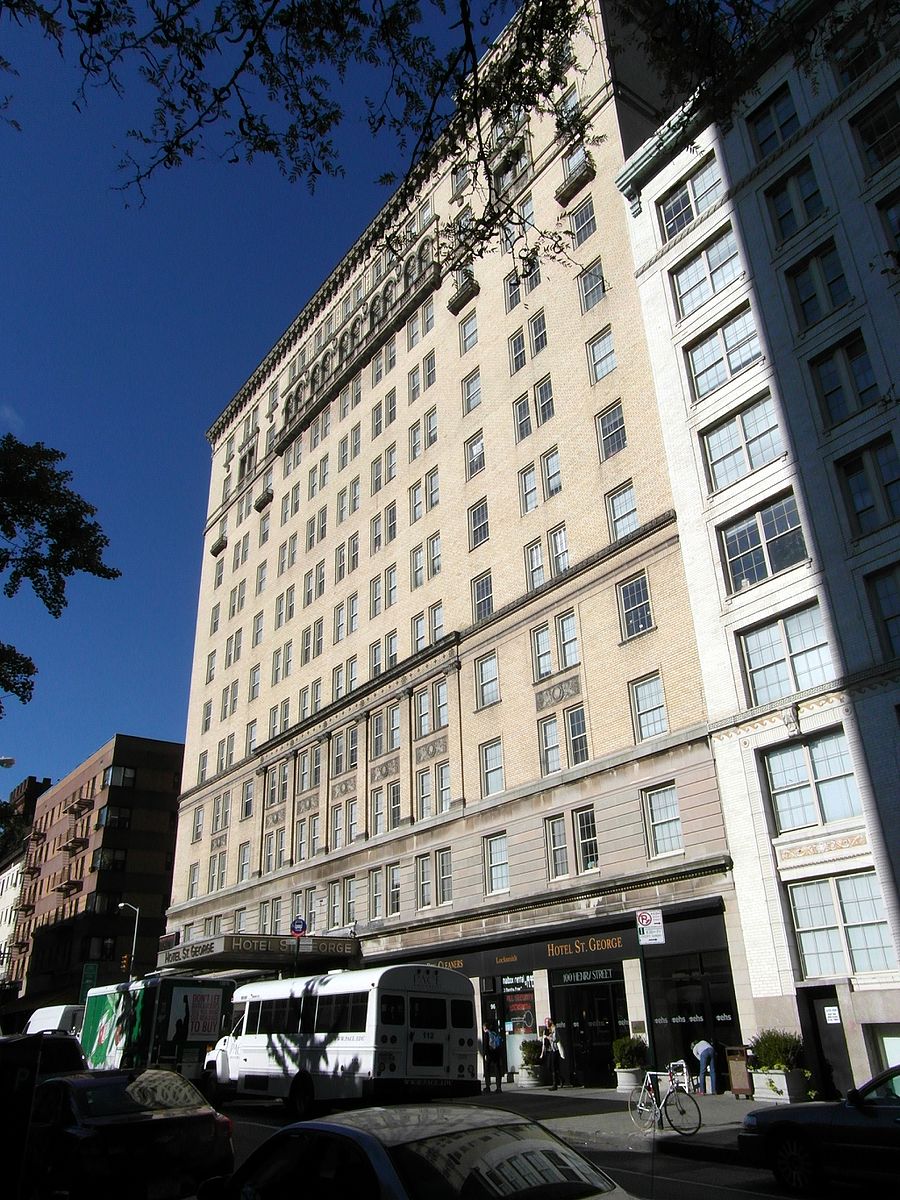 | ||
Hotel St. George, once the largest hotel in New York City, is located in the heart of the scenic Brooklyn Heights Historic District (1965), the first such designated neighborhood in New York City. Its various constituent buildings mostly survive and were built between 1885 and 1929. The historic building is now being used as student housing for surrounding colleges such as NYU, Pace, New York Law School and The New York Conservatory for the Dramatic Arts. It houses over 1400 students, and occupancy will increase with the building continuing to being refurbished and repaired. The building is open only to its student residents, it has two pool tables, and one communal kitchen to be shared with the resident occupants. Attached to the building is a four floor "Eastern Athletic" gym that is separately owned.
Contents
It is located just one stop from Manhattan, atop the Clark Street subway station (2 3 trains) on the IRT Broadway – Seventh Avenue Line. The station's sole subway entrance continues to function inside the hotel itself, right before the main door leading to the former ballroom and guest check-in.
History and description
The St. George is a collection of surviving buildings constructed predominantly from 1885 to 1929; the St. George occupied a full city block bounded by Clark Street, Pineapple Street, Hicks Street and Henry Street. The main building, St. George Tower, stands over 30 stories tall and is now a residential cooperative building. It once drew celebrities, athletes, and every presidential hopeful flocking to its many ballrooms (the Colorama Ballroom being the largest banquet room in the world) and the largest indoor salt-water pool in the United States. From 1975-1976, several political prisoners, exiled from Chile by dictator Augusto Pinochet, stayed at the Hotel St. George. Many of them became U.S. citizens and important Latino figures in the United States. The last remaining portion of the hotel operating as such was burnt down in a fire in August 1995. although its signage remains for historical purposes.
The 100 Henry Street entrance, also known as the "Weller Wing" of the St. George and previously the hotel main entrance, is now part of Educational Housing Services (EHS), which provides dormitory service to NYC area university students. This same entrance also allows access to the EHS-owned "Studio Wing". In 2005, EHS expanded their St. George operations and opened a new wing of the building at 55 Clark Street known as Clark Residence constructed over the site of the hotel building destroyed by fire in 1995. EHS houses 1200 domestic and international students. Street level house shops, restaurants, and charming neighborhood shops occupy the street fronts on Clark and Henry. The subway entrance is located on the Henry Street entrance.
In media
Columbia Records (now Sony Classical) used the Grand Ballroom at the Hotel St. George as a venue for several famous recordings by Leonard Bernstein and the New York Philharmonic. Among them are Tchaikovsky's Romeo and Juliet Fantasy Overture, recorded on January 28, 1957; Stravinsky's The Rite of Spring, 1958; and Gershwin's Rhapsody in Blue and An American in Paris, 1959.
Part of The Godfather was filmed in the St. George.
The hotel is a featured subject of a song by The Hassles (featuring and written by Billy Joel), and recorded in 1968; it can be heard on The Hassles' album, 'Hour of the Wolf', and on the bootleg Billy Joel compilation, entitled Billy Joel Sings.
